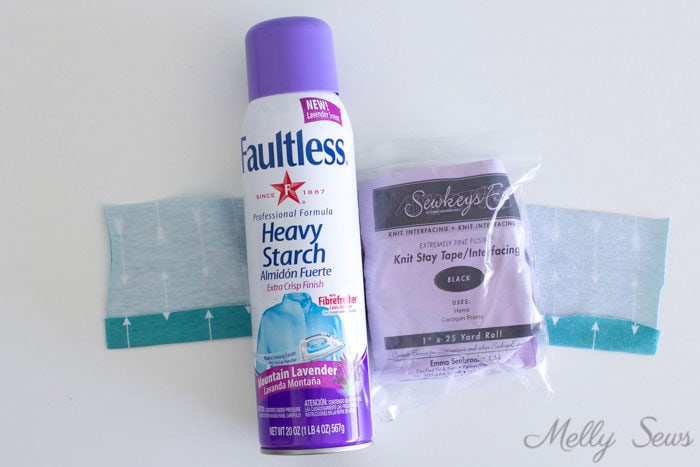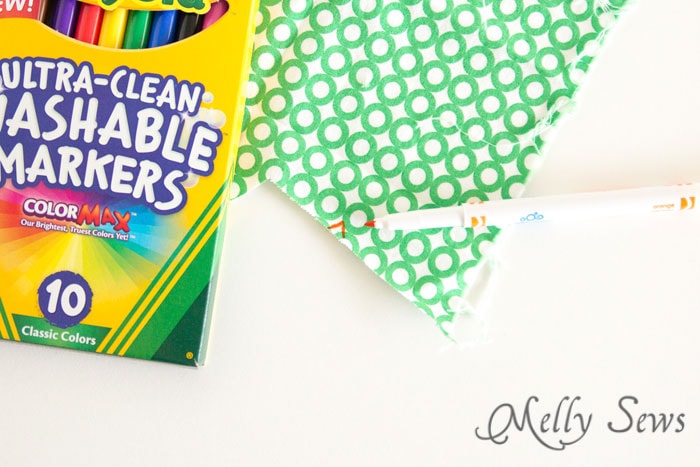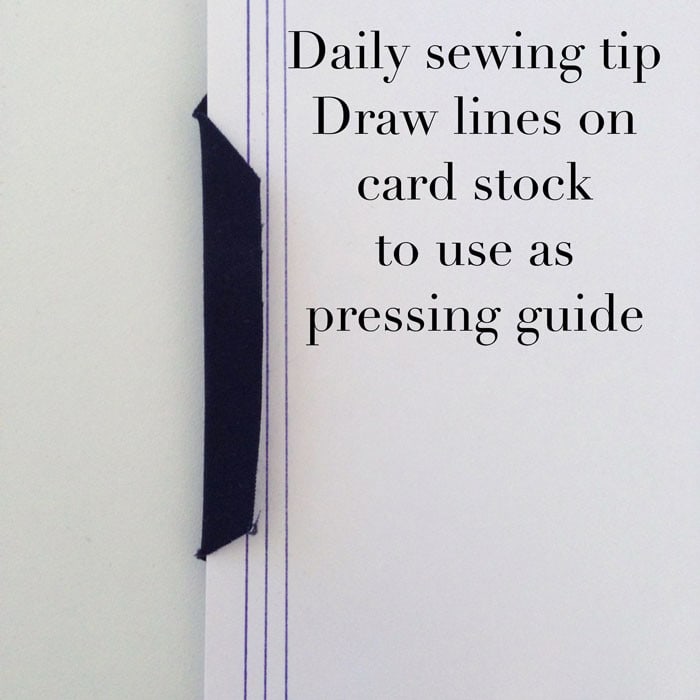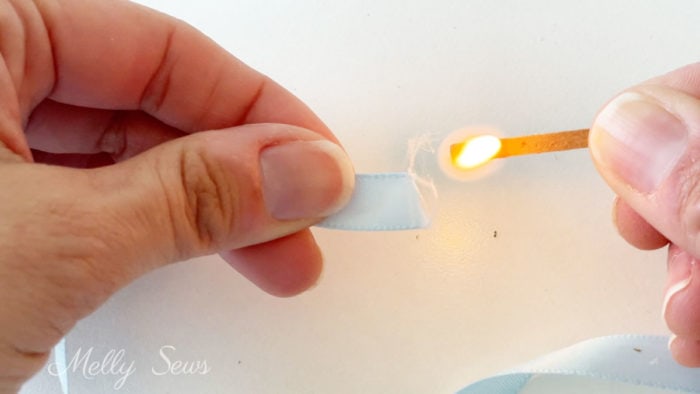Stitch up a storm with these clever everyday items that double as sewing tools.

Hey y’all, today I’m sharing some household items to use as sewing tools. These “not sewing” tools are items beyond the essential sewing notions (thread, scissors, sewing machine, seam rippers, etc). that I always have in my sewing room. Everyday tools are all items that aren’t specifically for sewing, but useful nevertheless. Even beginners might find these items helpful, whether you sew quilts or garments.
So, what are these tools and how can they help with your sewing projects? Take a look at the video below or on YouTube here, or you can scroll below the video for more explanation of each tool. I’ve also got affiliate links to the tools below the video.
This post contains affiliate links. As an Amazon Associate I earn from qualifying purchases. All affiliate links are identified with (affiliate link) after the link or a commissions earned statement above the link(s).
Here’s a list of those 5 Household Items to Use as Sewing Tools
(affiliate links)
Let’s talk about each one of those a little further.

Starch
Starch is a staple in my sewing room to help make all kinds of fabrics easier to handle. It’s useful for rayon challis – I spray my rayon and iron it before cutting out my pattern to make it easier to stay on grain. The starch also makes the fabric easier to sew since it gives it more body. And since starch washes out, I just wash my garment when I’m finished sewing and that lovely, flowy rayon drape returns.
I also use starch to help tame my stretch fabrics. It’s great to help straighten the raw edges of knit jersey when it’s trying to curl. I also starch almost all my knit hems before sewing them. Usually I don’t even have to use pins if I use starch while pressing my hem. It also helps stabilize the fabric so I don’t get a stretched out hem unintentionally.

Washable Markers
These are hands down my favorite tool for fabric marking, even though they were originally made so that kids couldn’t permanently mark their clothes. And in fact, I think having these markers for my kids is where I got the idea to use them for sewing. There’s a reason they’re on the top of my list of back to school supplies I buy for sewing. Whether I’m marking darts or dots, these work well.
Chalk pencils and tailor’s chalk don’t always give me as precise a line as I can get with these children’s markers. And I have yet to find a washable fabric that these won’t wash out of, but I do recommend testing on a scrap if you’re unsure. I have not used them on dry clean only fabric because I generally don’t sew with dry clean only textiles.
I love washable markers for marking because they come in so many colors and they mark on so many surfaces. No other marking tool I’ve used will reliably mark on fleece, for example. But these work!

Card stock
Card stock is useful to me in the sewing room in two ways. First, if I’m sewing something that I’m going to be cutting a lot of things out of, making a card stock template means I have an easier way to trace with a marker or rotary cutter to cut out multiples.
But most often I use card stock in this second way – as a pressing gauge. Mark a straight line with a ruler measured in from the card stock edge. Repeat these lines at different intervals – I do 1/8 inch marks up to 1/2 inch, then 1/4 inch marks to 1 inch. You could also do centimeters and millimeters – maybe do inches on one side and metric on the other if you’re someone who sews both U.S. and international patterns. Then I can fold the edge of my fabric against the edge of the card stock to press precise folds. Eventually, after much use, the card stock may warp from the steam from the iron. When it does, I just replace it with a new piece. I prefer this to a metal sewing gauge or pressing guide because it doesn’t get hot.

Transparent tape
The first use for tape that probably comes to your mind is for taping PDF patterns together, but I was using tape in my sewing room long before the advent of digital sewing patterns. I use it in place of pins sometimes, particularly with zippers. You can see it in action in this zipper pouch tutorial.
I prefer tape to pins when sewing zippers because it doesn’t shift the zipper like can happen when inserting, removing, or sewing over a pin. Instead it holds the zipper flat in place and then it peels off when you’re done. I have a much easier time precisely aligning my zipper for an in seam application than using pins. And as the needle stitches it punctures the tape, which makes it easy to peel off on either side of the seam.

Matches
Out of all the things on the list, this might be the least expected household items to use as sewing tools! But I always have a set of matches on a high shelf in my sewing room. You might guess that they’re for burn testing fabric of unknown origin, but that’s not the most frequent use I have for them. While matches are useful for burn tests, the way I most frequently use them is to seal the raw edges of synthetic fabric.
This is a trick I learned back in my days as a costumer. I sewed a pile of skirts for a community theatre production, and like most community theatres this one didn’t have a big budget. So the skirts were all made from a polyester twill fabric. And this particular fabric frayed like crazy. Like even serging the edges didn’t help, because the overlocked edge would just separate right off the fabric. Fray check was no match for this fabric either. So the head costumer suggested using a lighter on an edge to see what happened. The heat from the lighter melted the fraying threads into a thin bead of plastic along the raw edge, and all fraying stopped. While it took forever and was nerve wracking to seal all the raw edges with heat without burning or melting entire skirts, it was the only thing that worked.
Nowadays, in my sewing room I’m not sealing all the raw edges of an entire cast’s worth of skirts, so I don’t need a lighter. A short lived match works just fine to seal the cut edge of a zipper or ribbon, and that is why I keep them in my sewing room.
So as you build your sewing kit with traditional tools like pin cushions, straight pins, tape measures and shears, also consider these household items to use as sewing tools. Do you have any other tools from elsewhere around the house that you’ve found useful in sewing? If so, leave a comment and let me know what they are!

Nancy
I use a magnetic parts bowl for my pins. It is more stable, holds more pins, and corals pins better than my magnetic pin holder. Plus, it doubles as a pattern weight while keeping pins right where I need them. I also have an extendable magnet that is meant for retrieving nuts and bolts. It’s great for picking up droped pins and finding the pins that are hiding in corners or small spaces. Both came from a local tool shop.
Marianneg
Great ideas! Thanks!
Katie
YES I love my magnetic bowl. I got mine at the hardware store,, and it was even a promotional item that I got when I bought my cordless drill (which I use all the time, but not for sewing).
Chloe
Chopsticks for poking out corners!
MADELINE l NEWTON
thank you for some really great and smart ideas…i do hate the raving of threads ,never would of thought of the match to stop it …that is so clever and will need a steady hand …all are great but the match is my favorite….thank you again….have a wonderful day ….
Harriet
I keep a tealight and matches in my sewing room. If I need to seal the ends of a ribbon I usually have several pieces to do. And I’ll eventually burn my fingers on a match or a lighter. So I like the tea light, seal all the ends and then blow it out!
Jennie Schardt
I use Elmers glue to hold a hem together or two pieces of fabric when quilting. Just squirt a little near the edge and iron dry. The pieces are sealed together to then simply sew and washes right out.
Katie
I use the washable glue sticks for the same purpose.
Tanya
Hi Melly,
Thanks for the great post. Coincidentally, I also have those 5 household items at the ready in my sewing space. One can never have too much card stock or too many washable markers.
Tanya
Phoebe
Chopsticks! I use them to get into corners when I’ve turned a piece right-side-out. I also have a bunch of chopsticks pushed into a block of Styrofoam. I stack bobbins on them and thread.
pennyfp
Oooh!! I love that idea! I can see using that for having specific colored threads out for a project to keep them tidy until they go back in the drawer!! THANKS!
Phoebe
Chopsticks! I use them to get into corners when I’ve turned a piece right-side-out. I also have a bunch of chopsticks pushed into a block of Styrofoam. I stack bobbins on them and thread.
Katie
LOVE chopsticks. I have one that I sharpened in the pencil sharpener that I use to help hold fabric under the presser foot as I sew
Marina
Kids’ washable markers! What a great idea! My kids tend to hijack those invisible pens and destroy them before I could use them. One of my favorite items to keep in my sewing room is tiny bean bags to keep the patterns in place while cutting. Also, the magnetic square thing that I would place right next to the needle to ensure that I’m sewing straight.
Sarah Wale
Thank you for these great tips. I have used all of them except the starch; I will add that now. I also use coloured pens for marking but mine are the sort that disappear when heat is applied. It was very nerve-wracking the first time I used them (I did multiple tests before actually marking my pattern!), They really are like magic, and seem to work on any fabric. Good for non-washable or fabrics where you want minimal handling.
Thanks for all your brilliant sewing tips and ideas.
Sarah
Martha
I use many of these tools , but my favourite pattern weights are my husband’s spanners/wrenches that I use in place of pins when cutting out material. They are heavy and different sizes for different places on the pattern. I have also found that Barbecue lighters are a safer alternative to matches. Great to melt bag strapping so it doesn’t fray.😁
Bernice Henry
I’ve used all but, the starch and tape for a zipper will try both. My bobbins are in a case I thread a lot of them an put them back in the case which I can see through so when I need one I just reach for it. Thanks for the great ideas.
Alice Meyer
School glue is also washable and can hold things like zippers. Also the purple school glue dries clear but purple when you want to see where it has been applied.
Office supply clips can be used to hold fabrics like leather without leaving holes like pins do.
Advertising magnets 🧲 can hold pin or you could use magnets, one one each side to hold fabric and pattern pieces together so you won’t get holes in fabric that snag easily .
Thank you for you suggestions.
Violeta
Glue sticks can be used to keep pieces together while sewing or an Applique . I also keep it handy for the ends of threads and it makes it easier to get it through the eye of the needle.
Rory
Brilliant! Thanks for sharing these and I’m loving the comments.
Lori
Love this post! I have a few of my own. I keep a lint roller in my sewing room–the kind with the adhesive that you peel off. It’s great for picking up all that fuzz and threads that seem to land everywhere! I really like to use it on my ironing board. I also have a thing called a Hookout. It’s actually a fishing tool and is used to get the hook out of a fish if it swallows it. I found out about this tool from a sewer at a bazaar. It works great to turn a long thin tube of fabric to the right side. It’s a long tube with handles that you squeeze on one end, and pinchers on the other. You squeeze the handle, push the tool through the tube of fabric, use the pinchers to grab the fabric, and pull it back through. I love it!
Becca
My best item is a sticky lint roller. I can put cut threads on it to stop them from floating about, keep my fabric and work area tidy, and lift little threads out of fabric after unpicking. My other is old (clean 😉) make-up brushes to clean my sewing machine.
Pamela Loomis
I use over size washers as pattern weights and a candle rather than a match or lighter.it seems to give me more control.
pennyfp
I have a cheapy dollar store tool that is a metal point on one end and a plastic “blade”-ish edge on the other. I can use the metal point as a stylus for fine edges while I’m sewing and the plastic end is great to use in stead of a bone edge folder for paper crafting. I think it was originally a clay modeling tool? The dollar store also has silicone finger tip covers that work well for hot glue crafts and I like to use them when trying to handle hard-to-hold fabrics.
Great ideas from everyone! Thanks Melissa for encouraging us to think outside the box!
Harriet
Dollar Tree’s craft section has metal clothespins with pink “rubber” tips that are handy for various things.
Word of warning: I have had my 6×24 Fiskars ruler with the red numbers and grid markings for 8-10 years now, never in direct sunlight, but in sunlit rooms. It is so faded now it is difficult to see the markings. Buyer beware.
Painters tape is also great in the sewing room! I design my own handbags, and most have no pattern pieces, just rectangular cuts. I use painters tape to label each cut piece; it also holds zippers in place. Easy to see and remove.
When I’m done making flannel baby blankets I have a lot of remnants left over. I used my computer to print out an 8″ square with curved corners on cardstock, then cut it out and traced it onto the back of a Dollar Tree plastic placemat! Cut the shape, and I’ve got a easily traceable, never fall apart pattern, no messing with rulers and measuring remnants. I’ve made hundreds of soft flannel baby washcloths that way. I lay my plastic pattern on the reverse of a remnant and trace around it with an ink pen. Then I find a compatible print that’s the same size, place right sides together and stitch on my tracing line, leaving a couple of inches to turn, then trim around the stitching. Saves so much time and the stitching is perfect. You can use the backside of a printed placement. They’re very flexible. Dollar Tree does have clear cutting boards that are two in a package that can be used for a simple pattern piece where you need to fussy cut and see what you’re doing however they aren’t as easy to cut as the placemats are.
Kar
I second the washable glue stick for appliqués and other things. I’ve used it with tissue paper to make along strip of “tape” to tape two pieces of fabric (fleece, in this case) butted against each other. Then I zig zagged over the taped seam. Most of the tissue paper peeled off when I was done, and the rest came off in the washer along with the glue. Speaking of tissue paper, I also use it to make patterns. And I use a lighter (or candle for projects where I need a flame for longer) and frixon pens that fade with heat. The only thing about those is if you apply too high heat, like from an iron, the ink turns whitish.